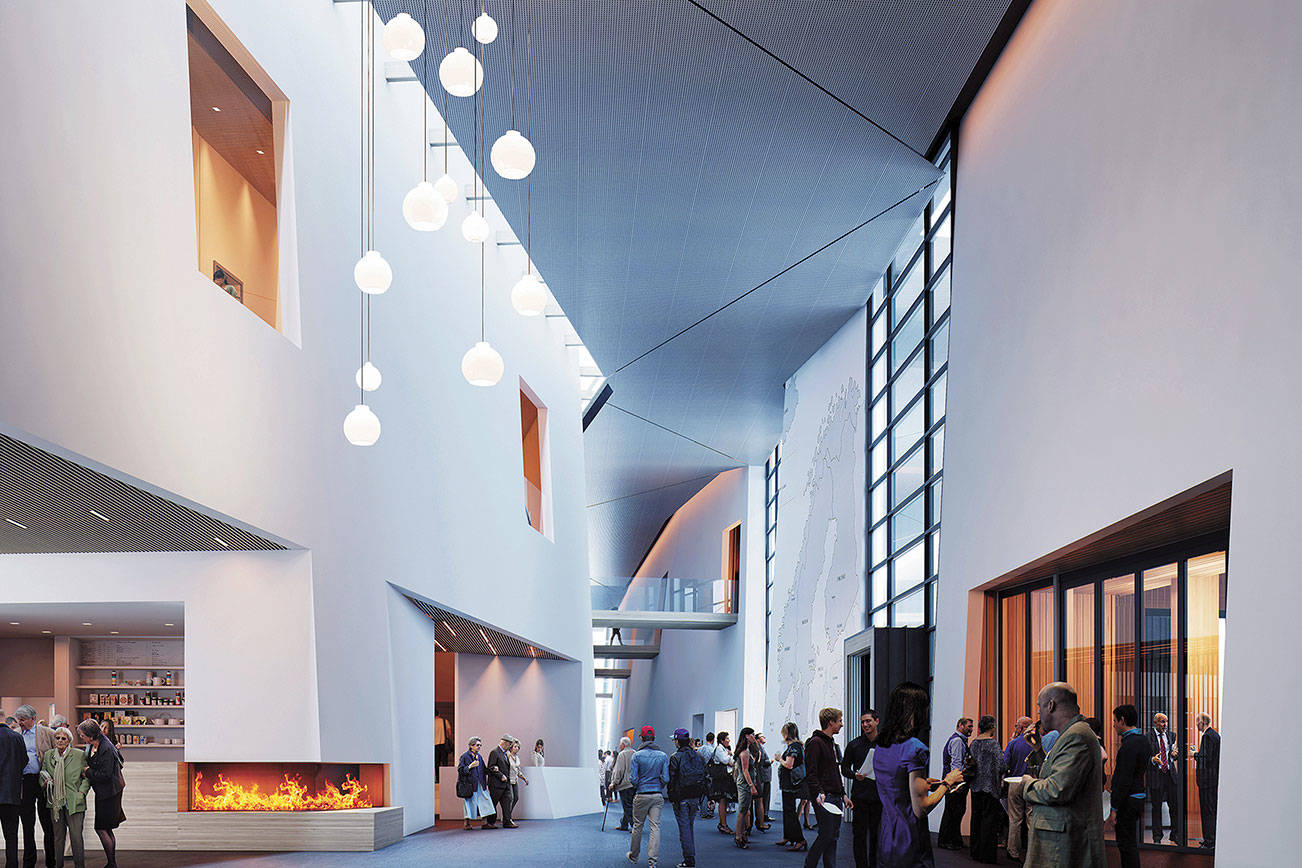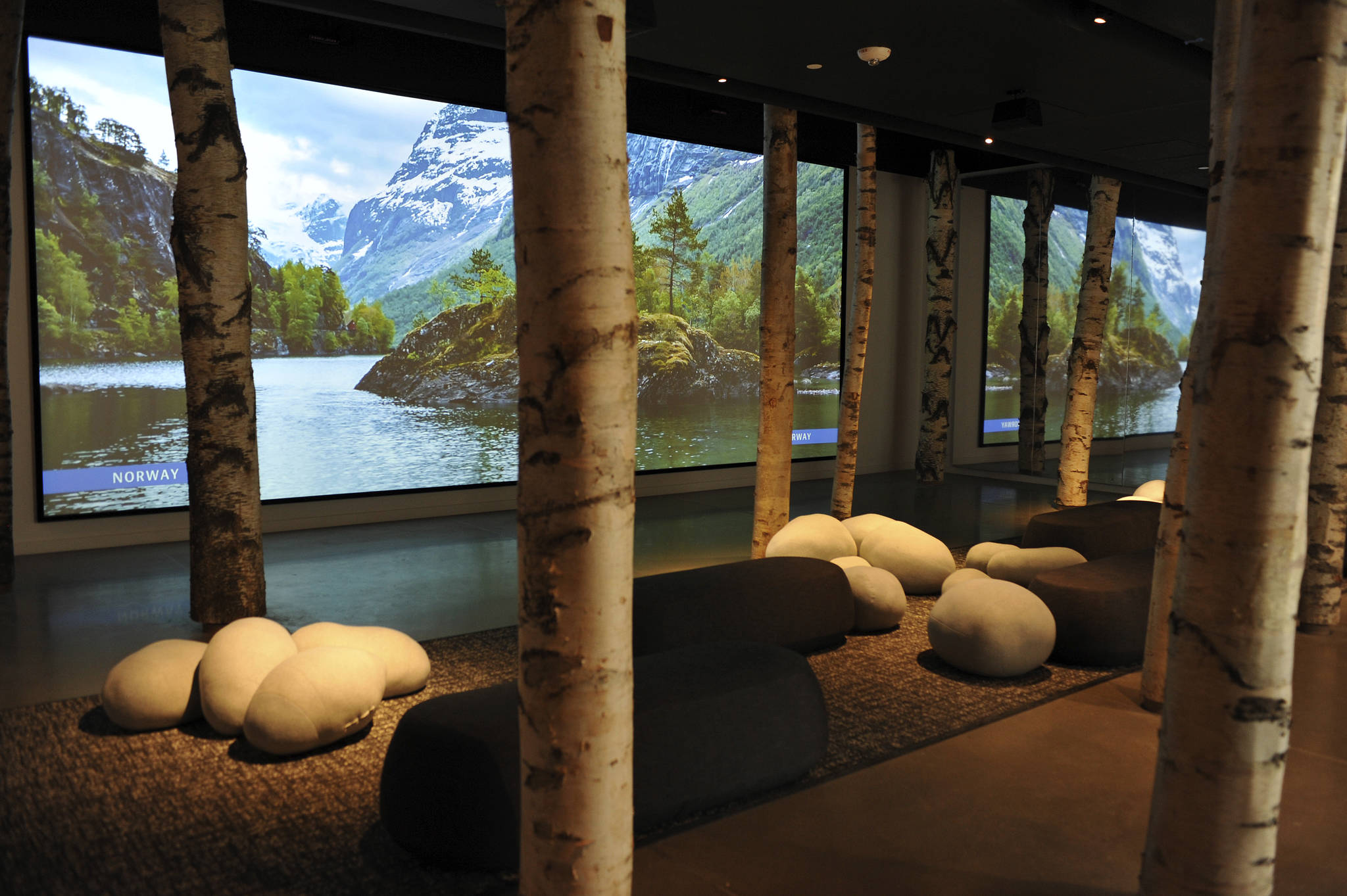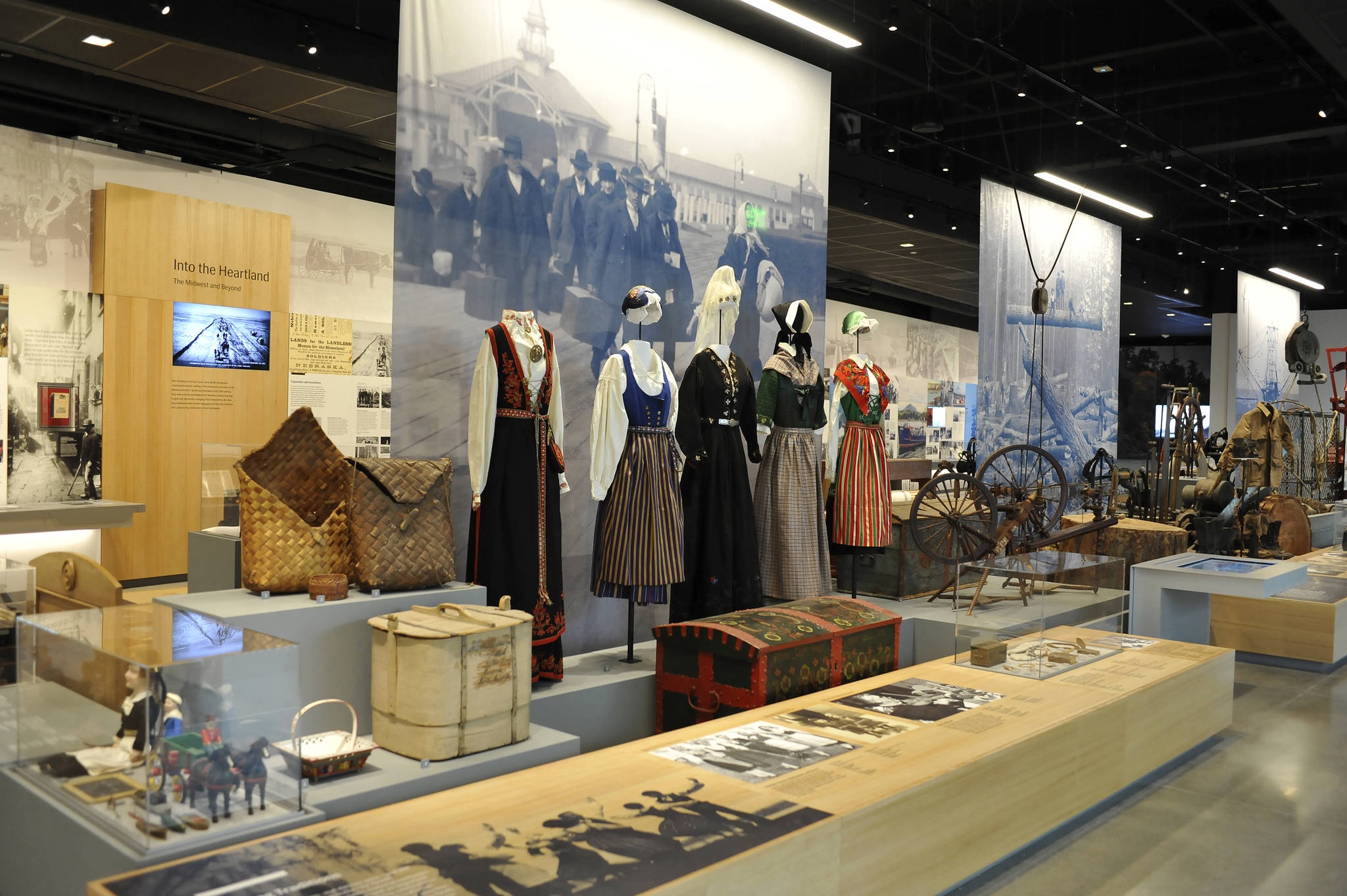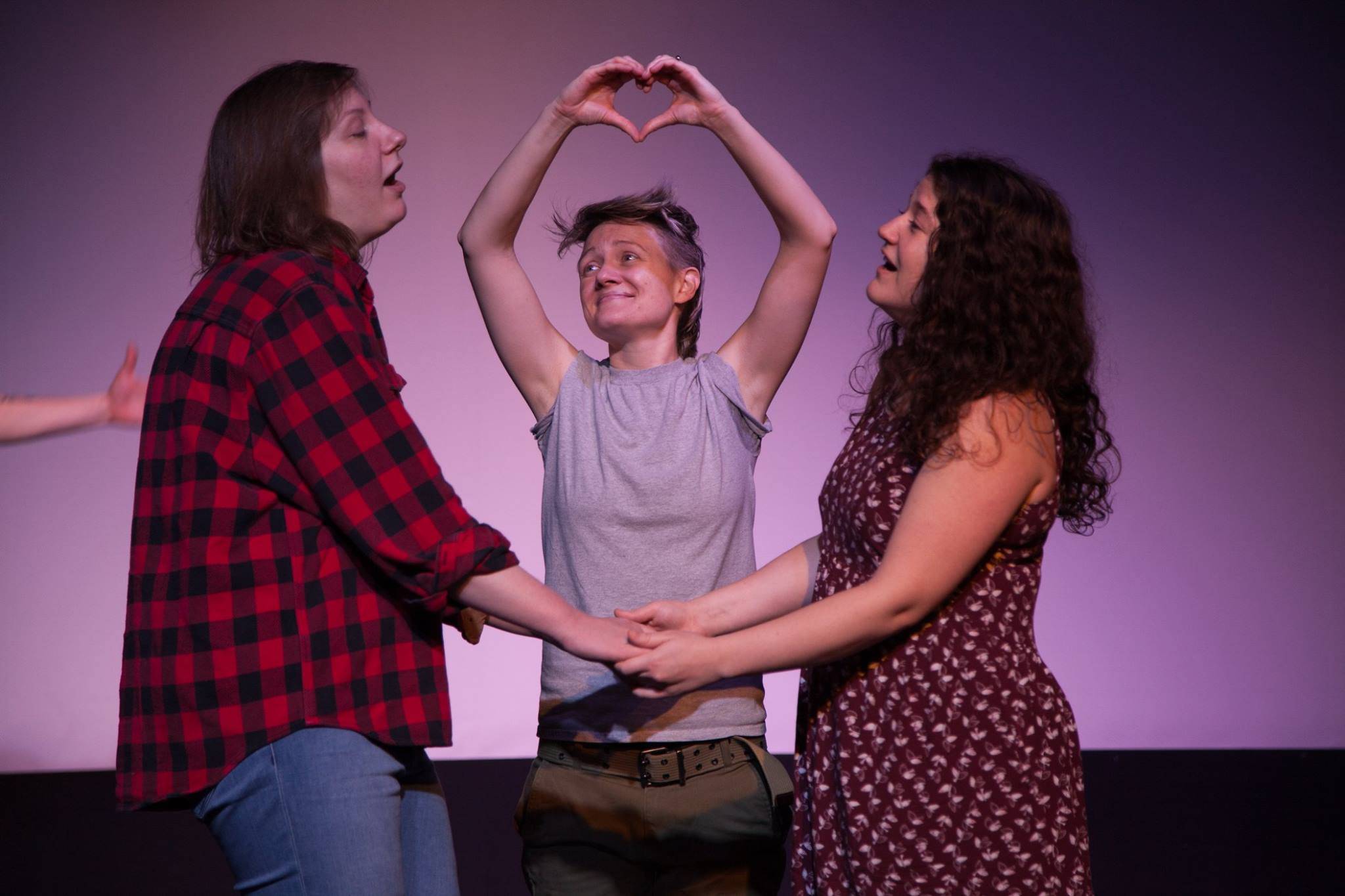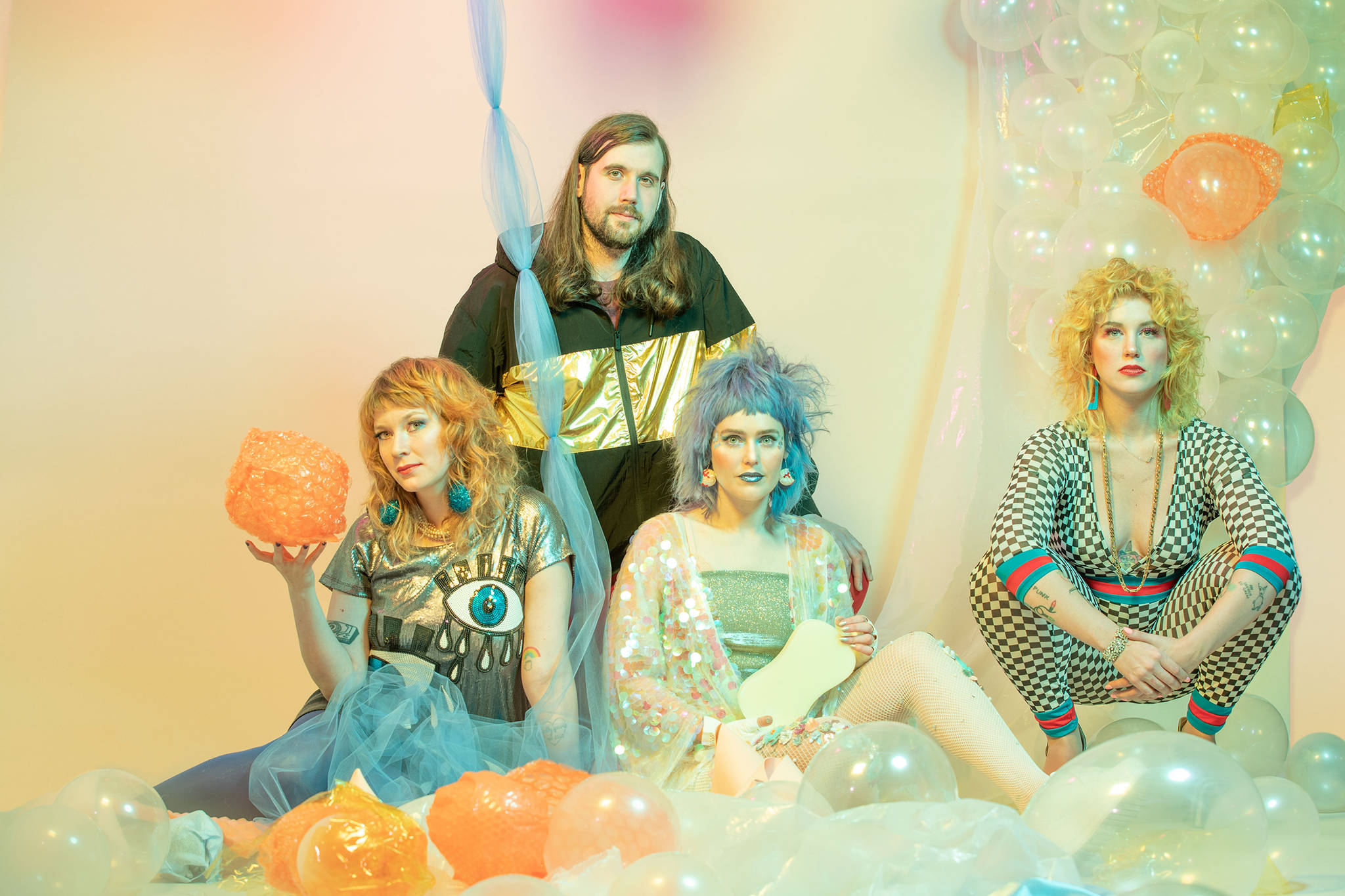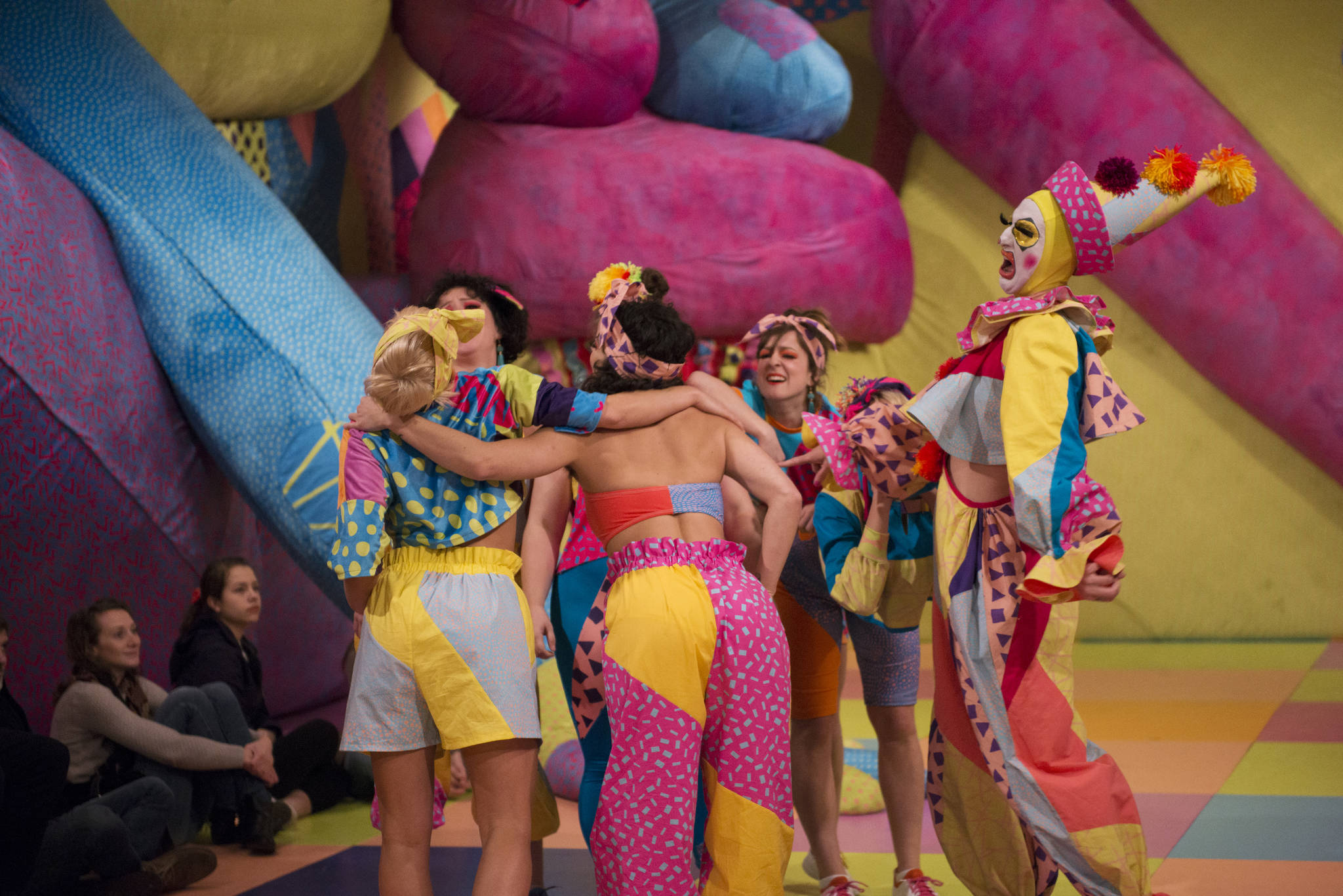The new Nordic Museum feels like a killer place to hold a fundraiser.
Upon entering the building, visitors are deposited in the undeniably impressive Fjord Hall. Near its beginning, a massive wall-sized map of the Nordic countries sets the stage for what the museum holds. As one wanders further along Fjord Hall’s slight-right curvature, glass birds hang overhead (along with four crossing walkways) and light pours in from above and the large windows at either end. It’s a gorgeous hallway that stands out among the interior architecture of Seattle museums … but it’s a hallway. Architecture is just a shell, it needs to be filled with substance.
The Nordic Museum is a complete departure from its former incarnation. The Nordic Heritage Museum was completely nondescript, tucked away in the red brick confines of the former Daniel Webster Elementary School in residential Ballard. Within its converted walls, visitors walked through mildly claustrophobic spaces that took them on the journey of the Nordic people from their homelands through the immigration process to the industries they built in Seattle. With strange wooden figures in some structures, it was unintentionally campy in a charming way, almost like walking through an old-school Disneyland animatronic ride (but with way more info and zero robots). Information-dense, it felt like a large-scale community project created by Nordic immigrants wanting to preserve their history and have a place to show it off to their grandkids. It definitely did not feel like a state-of-the-art museum.
None of that sentimentality carries over to the Nordic Museum. In comparison to its predecessor, everything feels sparse. The artifacts are now mostly confined to two second-floor galleries—one dedicated to the Nordic region and the other to Nordic Americans. Instead of walking through segments of culture—fishing, boating, etc.—they’re just plainly displayed in standard case-and-object layouts. A Nordic Orientation Gallery gives a cursory overview of each Nordic country—with items from each laid out in a very visually pleasing manner behind a wall-length glass display case—but there’s nothing for a visitor to sink their teeth into. A space for visiting exhibits currently hosts “Northern Exposure,” a contemporary Nordic art exhibit, a sort of hodgepodge show highlighting the diversity of artistic styles in the region. Despite a few standouts (like Finnish artist Kim Simonsson’s soft green wild-child sculpture Shaman Mossgirl With Birdhouse), the thematic pull never reaches beyond “Look at this cool stuff.”
There are certainly positive aspects of the new Nordic Museum, and it would be reductive to treat it as a finished product. The Sense of Place Gallery is the one spot in the museum with a truly homey vibe. Like the Nordic Heritage Museum, it is slightly cutesy, but it works. The gallery consists of a little woodsy viewing area—with treelike pillars and fake stones for seating—where majestic scenes of the Nordic countryside are projected. There’s such a sincere, calming zen to the place—like faux forest bathing. Placing the Nordic Spirit, a mid-1800s fishing boat, in a nice green courtyard space of the East Garden is a clear aesthetic upgrade over having it plopped in front of the entrance in the Nordic Heritage Museum’s parking lot. And as a host of opening weekend events—including a series of concerts in the Great Hall—demonstrated, if engaged properly and consistently, the Nordic Museum could become an interesting communal hub.
Ultimately, the issue is the space’s character. The Nordic Heritage Museum wasn’t sleek. It felt like a Ma-and-Pa operation built on a love of history and heritage. It was proud, but exuded a sense of Nordic modesty that’s easily identifiable for anyone who’s traveled to these countries. (I’m Norwegian to the point of having attended family reunions over there, so I know the sensibility). The new Nordic Museum feels like an embodiment of new Seattle—far sleeker than the previous iteration, but lacking the same substantive depth of personality. It’s the fancy new restaurant on the lower level of the high-rise that was built where the neighborhood dive bar used to sit. Sure, the food might be good, but the vibes can’t compare.
ssommerfeld@seattleweekly.com
